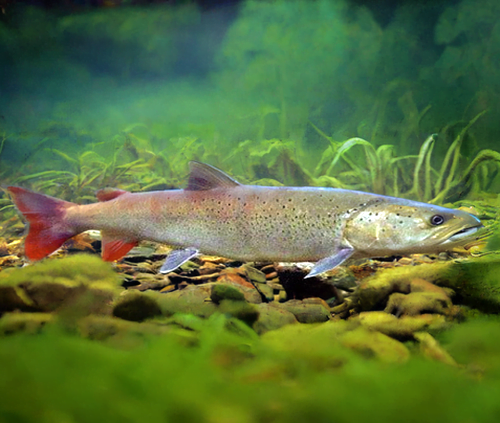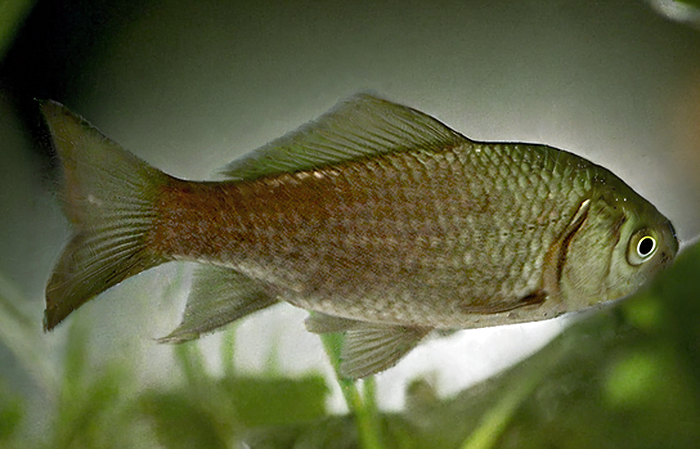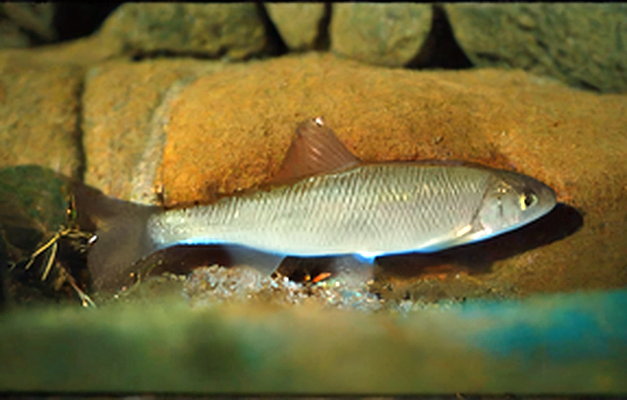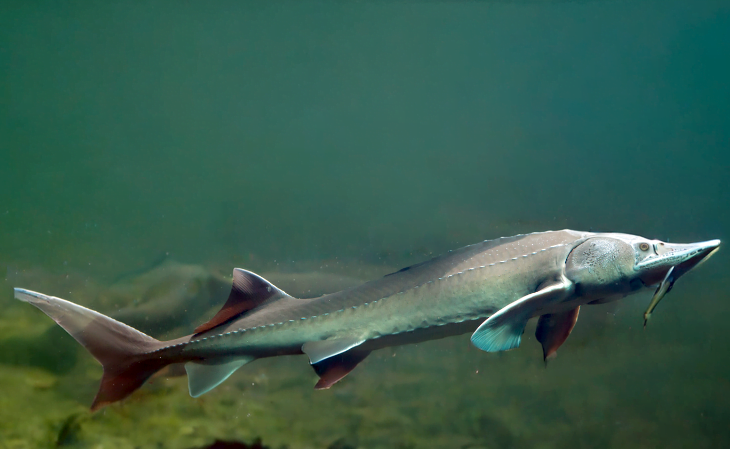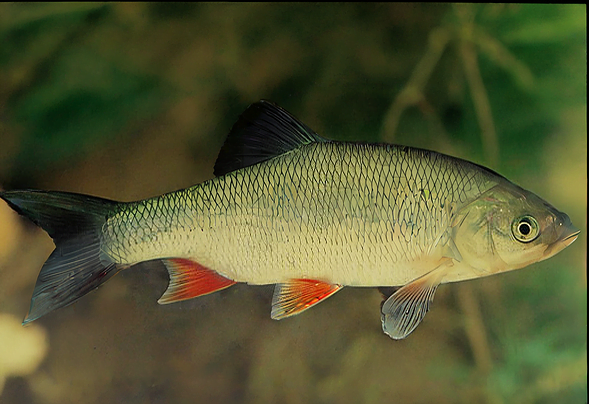Szczupak– drapieżna ryba z rodziny szczupakowatych. Żyje w wodach słodkich oraz w słonawych wodach Bałtyku. Osiąga długość do 1,5 m i masę do około 35 kg. Okazy ponad 15-20 kg są rzadkie. Zęby szczupaka są skierowane do środka i bardzo ostre. Linia boczna wyraźnie widoczna, biegnie od płetwy ogonowej, aż do pokryw skrzelowych. W dobrych warunkach rośnie bardzo szybko. Roczny szczupak może ważyć co najwyżej kilogram. Jest świetnie przystosowany do życia wodnego drapieżnika, normalnie nie jest aktywnym myśliwym, choć zalicza się do najbardziej drapieżnych ryb. Czyha w ukryciu między roślinami wodnymi i czeka na przepływającą zdobycz. Większe osobniki mogą aktywnie gonić ławice ryb (na przykład śledzi) w strefie pelagicznej dużych jezior albo Bałtyku. Szczupak wybiera ryby często występujące w jego ekosystemie i dostatecznie duże, „żeby były warte wysiłku”. Wśród szczupaków częstym zjawiskiem jest kanibalizm. Mięso szczupaka jest wysoko cenione, szczególnie w Europie środkowej i południowej, trudne jednak do porcjowania w taki sposób, by uniknąć pozostawienia w mięsie ości. Popularna ryba wśród wędkarzy sportowych ,którego łowią na przynęty naturalne (na żywca) i sztuczne (woblery ,rippery, „blachy” obrotowe, wahadłowe i inne ) Najpopularniejszą metodą połowu jest spining. Wędkarzy podczas połowu szczupaka obowiązują okresy i wymiary ochronne zgodnie z regulaminem PZW. W ostatnich latach liczebność szczupaka w polskich wodach wyraźnie się zmniejszyła ze względu na nieracjonalną gospodarkę rybacką (rybaków nie obowiązują okresy i wymiary ochronne ryb) i kłusownictwo.
Szczupak pospolity (Esox lucius) – Pike
Szczupak – OKRES OCHRONNY:
- w rzekach i zbiornikach zaporowych od 1 stycznia do 30 czerwca
- w pozostałych wodach od 1 stycznia do 30 kwietnia
- dodatkowo może być zaostrzony przez gospodarzy wód i OPZW w odrębnych zaleceniach łowiskowych
WYMIAR OCHRONNY – jest ustalany przez gospodarzy wód i OPZW
Limit dzienny – jest ustalany przez gospodarzy wód i OPZW
Szczupak pospolity (Esox lucius) – Pike

This article is about a fish. For turnpikes called Northern Pike, see Northern Turnpike. For the Canadian band, see The Northern Pikes.The northern pike, Esox lucius, is a carnivorous fish of brackish and freshwaters of the northern hemisphere. It is also known by the somewhat misleading folk-name, „water wolf”.E. lucius is found throughout the northern hemisphere, including Russia, Europe, the British Isles, and North America. Within North America, there are northern pike populations in eastern New York, northern New England, most of Canada (though pike are rare in British Columbia), Alaska, the Ohio Valley, the Great Lakes basin and surrounding states, Missouri, and Nebraska. They may be stocked in some western lakes and reservoirs as game fish.Northern pikes are most often olive, shading into yellowish or whitish on belly with short, light barlike spots on body and some dark spots on the fins. The lower half of their gill cover lacks scales and they have large pores on their head and lower jaw. Unlike the similar-looking muskellunge, the northern pike has light markings on a dark body background and less than six pores on the underside of its jaw.Pike grow to a relatively large size: lengths of 150 cm and weight of 25 kg are not unheard of. The largest specimen so far was caught in an abandoned stone quarry, in Germany, in 1983. She was 147 cm (4.8 feet) (All pike over 8 kg are females.) long and weighed 30.5 kg (67 lbs). The longest pike was 152 cm (5 feet) long (weight 27.5 kg, 60.6 lbs). There were reports in older days of giant pikes of up to 40,77 (89 lbs) and 41.5 (91.5 lbs) kg, in particular from Ireland, most of which were researched by Fred Buller and published in „The Doomsday Book of Mammoth pike”, supposedly caught in nets at the end of the 1800s. The British Islands have not managed to produce much in the way of giant pikes in the last 50 years or so however, wherefore there is much doubt surrounding those claims. Currently, the IGFA recognizes a 55 lb, 1 oz pike caught by Lothar Louis in Lake of Grefeern, Germany on October 16, 1986 as the all-tackle Northern Pike world record. Northern Pikes in North America seldom reach the size of their European counterparts, however, one of the largest being a 20.9 kg (46 lbs) specimen from New York state. There are reports of far larger pike, but these are either misidentifications with its much larger relative the muskellunge, or simply have not been properly documented and belong in the realm of legend.Pikes are found in sluggish streams and shallow, weedy places in lakes, as well as in cold, clear, rocky waters. The pike generally hides in wait for prey, holding perfectly still for long periods, and is then capable of remarkable acceleration, sometimes propelling it a meter into the air (though it rarely leaves the surface). It catches its prey sideways with its sharp teeth, in order to kill it, before turning lengthwise to swallow. It eats mainly fish, but on occasion water voles and ducklings have also been known to fall prey to pike. It is moreover a cannibal and this cannibalism serves in maintaining stability in the pike population. Young pike have been photographed eating pike of a similar size. Northern Pike also feed on others of their kind, insects, and leeches. It has a tremendous appetite.By: Wikipedia




